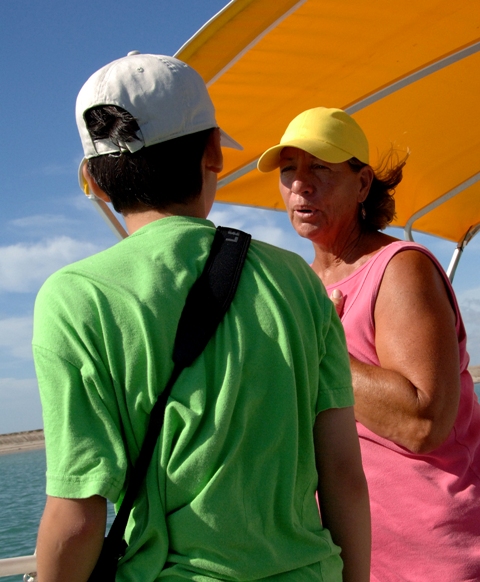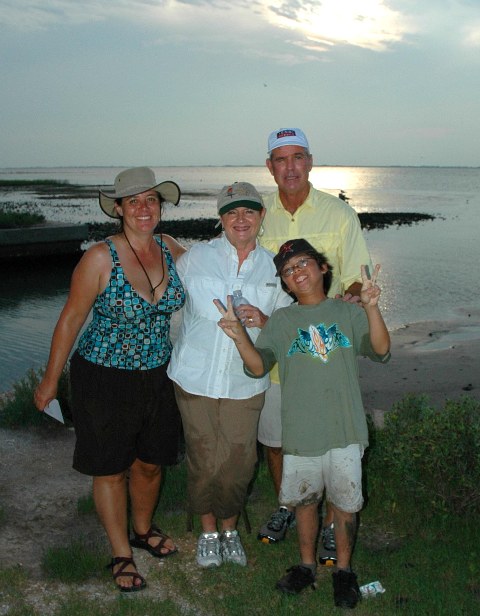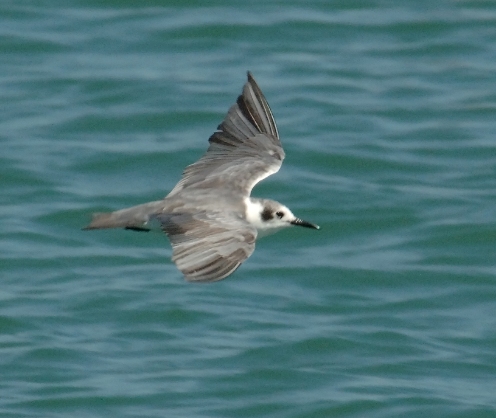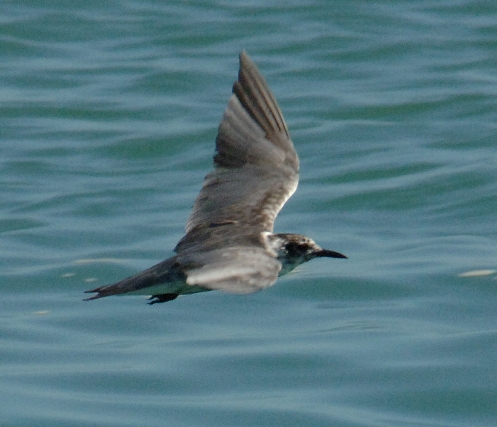The well still gushes, the tropics are threatening, and BP and their apologists are still obfuscating. Not all apologists work for BP or the private sector. Many reside in Congress. The extent of the damage will unfold over years. Any NRDA (National Resource Damage Assessment) at this point will be preliminary. Tragically, this is a work in progress, and Congress appears to be willing to wait.
Here is the bad news (there is nothing new about Congress being bad). BP cannot return the Gulf to its former state. I can only hope that, with time, the Gulf will heal itself. Let’s also consider the condition of the Gulf before this blow out. Dead zones off the Mississippi delta, rapidly eroding wetlands along the Louisiana coast, and three hurricanes (Katrina, Rita, and Ike) left the Gulf on life support. We need to think beyond triage.
Let’s begin with demographics. Currently around 14 million Americans live in Gulf coast counties, a number less than 5% of the U.S. population. Even that number is misleading, though. This estimate includes Harris County, Texas, and Houston. The Florida Gulf counties include Hillsborough and the city of Tampa. Without those two metropolitan areas (and leaving New Orleans and Corpus Christi in the mix) the Gulf population is minuscule and easily dismissed by the rest of the country.
Without population, the region has little political power. With much of its economy in the hands of non-Gulf companies (such as BP), the region has little economic clout. Populated by a dazzling (and eclectic) diversity of cultures and ethnicities, the region has no single voice (or single language) to speak to its concerns. The Gulf gives food, transportation, energy, and entertainment, and in return gets dead zones and oil spills.
What if BP’s oil now fouled the beaches of Long Island or the Hamptons? What if the Palos Verdes peninsula or the San Diego beaches were awash in this black goo? The nation has chosen to protect the Pacific and Atlantic coasts while laying waste to the Gulf.
Remember the Santa Barbara spill?
On the afternoon of January 29, 1969, an environmental nightmare began in Santa Barbara, California. A Union Oil Co. platform stationed six miles off the coast of Summerland suffered a blowout. Oil workers had drilled a well down 3500 feet below the ocean floor. Riggers began to retrieve the pipe in order to replace a drill bit when the “mud” used to maintain pressure became dangerously low. A natural gas blowout occurred. An initial attempt to cap the hole was successful but led to a tremendous buildup of pressure. The expanding mass created five breaks in an east-west fault on the ocean floor, releasing oil and gas from deep beneath the earth.
For eleven days, oil workers struggled to cap the rupture. During that time, 200,000 gallons of crude oil bubbled to the surface and was spread into a 800 square mile slick by winds and swells. Incoming tides brought the thick tar to beaches from Rincon Point to Goleta, marring 35 miles of coastline. Beaches with off-shore kelp forests were spared the worst as kelp fronds kept most of the tar from coming ashore. The slick also moved south, tarring Anacapa Island’s Frenchy’s Cove and beaches on Santa Cruz, Santa Rosa and San Miguel Islands.
Only days after the spill began, Get Oil Out (GOO) was founded in Santa Barbara. Founder Bud Bottoms urged the public to cut down on driving, burn oil company credit cards and boycott gas stations associated with offshore drilling companies. Volunteers helped the organization gather 100,000 signatures on a petition banning offshore oil drilling. While drilling was only halted temporarily, laws were passed to strengthen offshore drilling regulations. Union Oil suffered millions in losses from the clean-up efforts, payments to fishermen and local businesses, and lawsuit settlements. But maybe worse, the reputation of the oil industry was forever tarnished.
U.S. President Richard Nixon said that “it is sad that it was necessary that Santa Barbara should be the example that had to bring it to the attention of the American people. What is involved is the use of our resources of the sea and of the land in a more effective way and with more concern for preserving the beauty and the natural resources that are so important to any kind of society that we want for the future. The Santa Barbara incident has frankly touched the conscience of the American people.”
A year later the nation celebrated the first Earth Day. The Nixon administration began to initiate the most sweeping environmental regulations in the nation’s history. One can argue that the Santa Barbara spill gave birth to the nation’s environmental movement. The Santa Barbara spill totaled 200,000 gallons, while the Gulf gusher already has spewed between 40 and 80 million gallons into the Gulf. But does anyone expect a cathartic uprising this time?
Louisiana isn’t California, is it? Isn’t it interesting that in all of the bitching about New Orleans after Katrina (the people don’t want to help themselves, the city shouldn’t be rebuilt below sea level, all Louisiana politicians are corrupt), no one took the time to consider the nation without the Gulf, without the Port of New Orleans, without the Mississippi River transportation corridor, without the oil and its products that fuel the rest of the nation.
Between the nation and its raw greed is the Gulf. Between the Gulf and the nation is a cultural “gulf,” a socio-economic chasm. Subject to the malevolence of greed is nature, forever the victim.
Corrupted by wealth and power, your government is like a restaurant with only one dish. They’ve got a set of Republican waiters on one side and a set of Democratic waiters on the other side. But no matter which set of waiters brings you the dish, the legislative grub is all prepared in the same Wall Street kitchen. – Huey Long
There are examples from the past to consider. In the early 1900s fashionable women in the northeast demanded plumes and feathers for their hats. Egrets, herons, spoonbills and their kin were slaughtered along the Gulf coast by the countless numbers so that the feather merchants could supply this demand. The conservation movement began in the swamps of Florida and Louisiana, where lone wardens funded by the National Audubon Society and the American Ornithological Union fought (and died) to protect Teddy Roosevelt’s first refuges from the pillagers.
Ironically, less than a century later the National Audubon Society began oil and gas development in its Paul J. Rainey Sanctuary in coastal Louisiana. According to PERC, “since the early 1950s, 37 wells have pumped natural gas (and a small amount of oil) at various times from Audubon’s Paul J. Rainey Sanctuary, a 26,000-acre preserve at the edge of the Intracoastal Waterway and Vermillion Bay in Louisiana. These wells have produced more than $25 million in revenues for the Society.” There is a lesson in that irony, one that the early Audubon movement would not have ignored.
Actions deferred are all too often opportunities lost, particularly in safeguarding our natural resources. I urge the enactment of this proposal at the earliest possible date so that a further significant step may be taken to assure the availability and accessibility of land and water-based recreation opportunities for all Americans — President John Kennedy, 1962 letter to Congress
Flash forward to the early 1960s. Acting on the wishes of the recently assassinated president, Congress established the Land and Water Conservation Fund (LWCF) in 1965. The Act designated that a portion of receipts from offshore oil and gas leases be placed into a fund annually for state and local conservation, as well as for the protection of our national treasures (parks, forest and wildlife areas).
Although authorized at $900 million from revenues generated from federal offshore oil royalties, the LWCF has only been fully funded once. More than $16 billion remains in the Fund on paper as an unspent balance, but has been diverted to the federal treasury. The demand for such funding has dramatically increased since the 1960s, yet this fund, established for this expressed purpose, remains gutted.
The government consists of a gang of men exactly like you and me. They have, taking one with another, no special talent for the business of government; they have only a talent for getting and holding office. Their principal device to that end is to search out groups who pant and pine for something they can’t get and to promise to give it to them. Nine times out of ten that promise is worth nothing. The tenth time is made good by looting A to satisfy B. In other words, government is a broker in pillage, and every election is sort of an advance auction sale of stolen goods. — HL Mencken
Congress clearly indicated that the new Federal program should have a lasting effect on the supply of recreation sites and facilities by requiring that sites assisted be added permanently to the national recreation estate. As a result, Section 6(f)(3) of the Act states unequivocally that grant-assisted areas are to remain forever available for “public outdoor recreation use,” or be replaced by lands of equal market value and recreation usefulness.
According to the National Park Service,
Initially, three sources of revenue to the fund were designated: proceeds from sales of surplus Federal real property, motorboat fuel taxes and fees for recreation use of Federal lands. The level of funding from FY 1966 through FY 1968 reached about $100 million per year, which was far short of Congress’ expectations. To remedy this shortfall, it was proposed that Outer Continental shelf (OCS) mineral leasing receipts be tapped. In 1968, P.L. 90-401 raised the Fund’s level to $200 million a year for five years, beginning in FY 1969, making OCS revenues available to cover the difference between this minimum level and receipts from other sources.
By 1970, growing demands on the Fund led to enactment of P.L. 91- 485, which increased the LWCF again to a $300 million annual level from FY 1971 through FY 1989. This amendment reveals that Congress’ perception of needs for the Fund program had expanded in three ways: the State grant program should give more emphasis to urban parks and recreation areas; the grant program should help acquire and develop recreation facilities within urban areas, not just nearby; and the Federal side of the Fund program should also contribute to meeting close-to-home recreation needs.
The Fund’s increase in authorized funding to its current level came with enactment of P.L. 95-42 in June 1977, which increased the LWCF to $900 million for FY 1978 and subsequent years. Congress also enacted P.L. 95-625, which created, among other things, the Urban Park and Recreation Recovery Program (UPARR), as a complement to the LWCF program. This program encouraged local governments to rehabilitate existing recreation facilities, demonstrate innovative programs, and plan for overall revitalization of community recreation systems.
Since 1965, funding for the grants program has averaged approximately $100 million per year, with a peak of $369 million in 1979. In the last 20 years, annual appropriations have decreased to a low of zero funding in 1982 and 1996-1999. However, as a direct by-product of the effort to enact the Conservation and Reinvestment Act, the drought ended in FY 2000 with appropriations that ranged from $140 million in FY 2002 to $28.3 million in FY 2006.
The LWCF is intended to use offshore lease revenue to fund recreation and conservation projects throughout the nation. Since its inception Congress and the various administrations (Democrat and Republican alike) have viewed this fund as one of those sources of revenue to raid. The Obama administration, for example, budgeted less than half of the authorized $900 million for FY 2009. And while the funding appropriated is shared with the entire nation, the damage is generally limited to the Gulf.
The policy changes needed are simple. First, raise the LWCF appropriation to no less than $1 billion annually. Second, pass legislation to permanently fund the LWCF, insulating the fund from raids. Third, expand the LWCF by dedicating additional OCS revenues to conservation and recreation efforts in the Gulf states. Fourth, appropriate the LWCF funds that previously were authorized but not spent (around $13 billion) for a one-time “get right with God” appropriation. Give priority to the Gulf states, and remove the matching-fund requirement for stateside grants in this one-time appropriation. As now structured, the LWCF requires matching funds from local grantees, insuring that the poorest will continue to remain without.
The LWCF is not a true trust fund in the way “trust fund” is generally understood in the private sector. The fund is credited with revenues totaling to $900 million annually, but Congress must authorize appropriations; if appropriations are not made from the fund, the revenues remain in the U.S. Treasury and can be spent for other federal activities. If these funds are spent for other activities, no interest is accrued in the LWCF account. In addition, because the fund goes through the annual appropriations process, the funds are subject to earmarks and other more precise directions from Congress each year.
“Deposits” to the LWCF are thus, in effect, only an authorization of expenditures that accumulate if the funds are not appropriated. Through FY2001, the total amount that could have been appropriated over the years was $24.5 billion, but only $11.4 billion has been appropriated.
CRS Report to Congress
The OCS lands are the property of all citizens of this country. The damage being done is restricted to a few. A law is already in place to begin to make this right, the Land and Water Conservation Fund. Now is the time for this administration and Congress to atone for the sins of the past, and to begin the long, painful process of recovery. Now is the time to finally make good on the promise.





